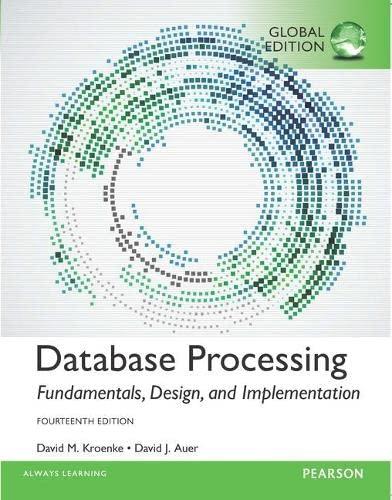Question
Consider the following schedule of actions, listed in the order they are submitted to the DBMS: Schedule S1: r1(X), r2(Y), r1(Z), r2(X) , w2(X) ,
Consider the following schedule of actions, listed in the order they are submitted to the DBMS: Schedule S1: r1(X), r2(Y), r1(Z), r2(X) , w2(X) , r2(Z) , r3(Y) , w2(Z), w1(Y) , w3(Y), c3, r1(Y) , w2(Y), c2, c1. Schedule S2: r2(X),w1(Y), w2(Y),w1(X), w3(Z), c1, w2(X), c2, w3(X), c3. For each of the following concurrency control mechanisms, describe how the concurrency control mechanism handles the schedule. Assume that the timestamp of transaction Ti is i. For lock-based concurrency control mechanisms, add lock and unlock requests to the above schedule of actions as per the locking protocol. The DBMS processes actions in the order shown. If a transaction is blocked, assume that all its actions are queued until it is resumed; the DBMS continues with the next action (according to the listed schedule) of an unblocked transaction.
Q3. Rigorous 2PL with protocol based on a timestamp for deadlock avoidance (use wait-die policy) Q4. Rigorous 2PL with protocol based on a timestamp for deadlock avoidance (use wound-wait policy)
please give answer in chart form
Step by Step Solution
There are 3 Steps involved in it
Step: 1

Get Instant Access to Expert-Tailored Solutions
See step-by-step solutions with expert insights and AI powered tools for academic success
Step: 2

Step: 3

Ace Your Homework with AI
Get the answers you need in no time with our AI-driven, step-by-step assistance
Get Started


